 Facebook
Facebook
 X
X
 Instagram
Instagram
 TikTok
TikTok
 Youtube
Youtube
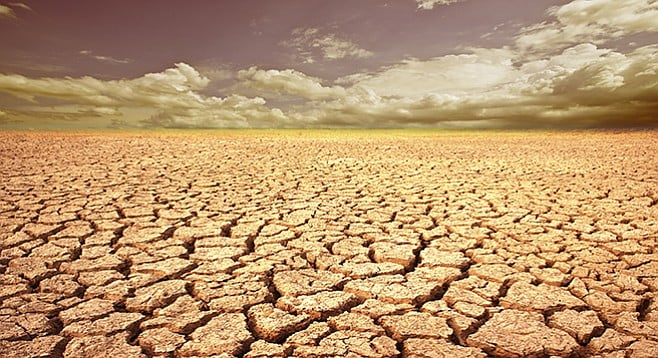
Long-range drought forecasts get bleaker, while long-range economic and demographic forecasts get giddier. Something’s gotta give, San Diego. Both forecasts aren’t likely to be right.
The reality is that the people who really run the city and county — real estate developers — take the sunny and greedy view. This means that San Diego must undergo a massive sociocultural change before it is capable of tackling the massive water problems that probably lie ahead.
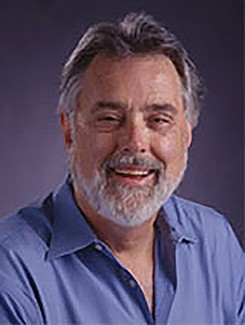
“This is a town that historically has been run by and for real estate developers,” says Steve Erie, professor of political science at the University of California San Diego. He is right. The city and county have been run by the real estate industry, which, along with the military/aerospace complex, has dominated the economy and politicians for decades.
Scientists point out that a megadrought — one lasting decades or centuries — is possible. Why? California has had them before. In medieval times, there was a California megadrought that lasted more than a century. Southern California has had three megadroughts in the past 400 years. Some scientists warn of a 200-year drought. Some climatologists say that conditions like the devastating 1930s Dust Bowl could become normal.
California is in the fourth year of its worst drought since record-keeping began in the 19th Century. Odds of a decade-long Southwest drought at some time during this century are around 50 percent, and some scientists say 80 percent is more like it. The likelihood of a 35-year Southwest drought is 10 to 50 percent, depending on how severe the effects of climate change are.
Global warming worsens any drought. The most dire predictions say increased temperatures could reduce storage in the Sierra Nevada snowpack by almost 90 percent by the end of this century.
“We have to realize that the governor [Jerry Brown] means business,” says Erie. “There could be another 25 percent cut mandated next year.” San Diego gets around 25 percent of its water from Imperial County. He believes that is in jeopardy because of Imperial health problems tied to the drying up of the Salton Sea. Whatever happens, San Diego water bills will soar even more, particularly if the county goes the extremely expensive desalination route.
So, there is a good chance that current generations, and/or future generations, are going to go through hell. Scientific evidence suggests that the 20th Century was aberrationally wet. The Southwest water infrastructure was constructed with that century as a model. Possibly, it’s back to the drawing board.
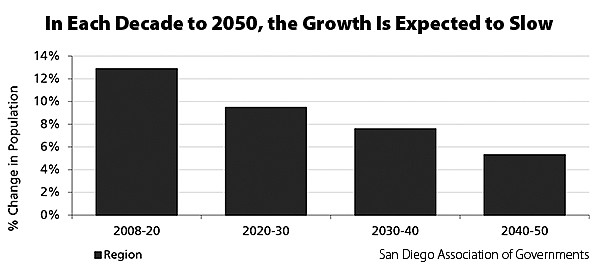
In the 20th Century, California had a great inrush of population. It’s possible there will be a great outrush in the 21st Century.
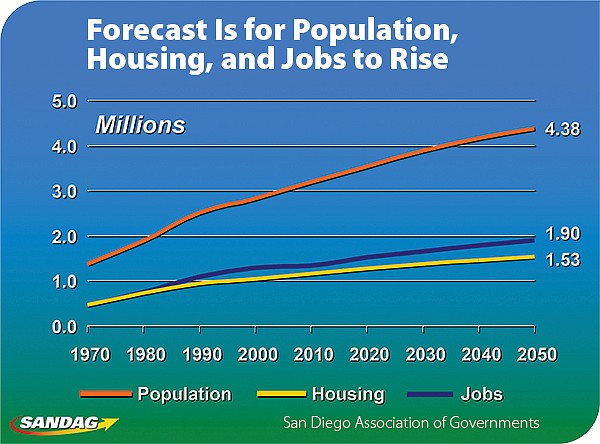
But the San Diego County Water Authority believes the county will have enough water to keep the builders creating new homes as population surges. The San Diego Association of Governments projects that county population will rise 40 percent to 4.385 million between 2008 and 2050. The city will grow by 45.9 percent in the same time span, to 1.946 million.
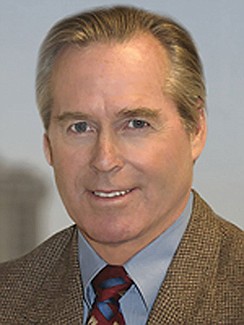
Marney Cox, chief economist for the San Diego Association of Governments, says, “Our forecasts don’t have extreme positions in them.” Economists and demographers take the possibility of traumatic events into account, but they take “the middle of the road, which is most likely to happen.”
Cox says the popular notion that agriculture takes 80 percent of state water is not true. Actually, he says, agriculture takes 40 percent and environmental considerations (such as making some water off-limits to protect a rare fish species) take another 40 percent. If the water situation gets really bad, “there will be pressure to change the environmental laws,” says Cox.
Also, the market system and technology will play a role in producing more water, says Cox. He cites fracking in the oil industry. It has made the United States energy independent and driven down the price of oil. “Water will be a resource that will get a lot of attention; market forces will be unleashed, technology will look at it.”
Then Cox gets to the critical question: if water remains in extremely short supply, should the city and county cut back on new housing construction? No, he insists. “The best way to deal with the drought is to incorporate a program that has existing residents [responsible for] greater amounts of conservation,” says Cox. That is, expect the people already in San Diego to do the bulk of conserving water.
“Cutting off residential permits is not going to do it. We shouldn’t go there,” he says. Why? Such a move would have “little to no impact.” The percentage of water consumption by new homes is a small piece of the whole, and new housing developments are “substantially more efficient” in water usage, he says.
Hogwash, ripostes Erie. “The promise of more water for real estate development is just more San Diego happy talk,” he says. San Diego is “delusional — in denial.” For example, the big housing/retail/office development planned for Carmel Valley, One Paseo, in its original design, was “just insanity.” The San Diego Association of Governments and the water authority “do not plan for the worst-case scenarios.”
Stuart Hurlbert, professor emeritus of biology at San Diego State University, is one who proselytizes for population stabilization. He is president of Scientists and Environmentalists for Population Stabilization. He is fighting an uphill battle: “Mainline media are all basically carrying water for the building industry and the chamber of commerce. The voice of population stabilization doesn’t get around,” he says.
He believes that the county and city will achieve the population growth forecast by the San Diego Association of Governments. “The county and city could grow that fast, but it would be a social and environmental disaster,” says Hurlbert. Filling the county with high-rises, condos, and the like would be “forcing people into a lower standard of living.”
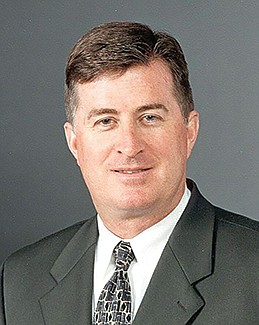
Kelly Cunningham, economist for the National University System Institute for Policy Research, looks at the forecasts of San Diego population in 2050 and says, “It is hard to see that happening.” He sees “an animosity toward building” as a result of the water crisis. “We have to rely on water being transported here, and California is not doing a really good job of transporting water.”
Last year, San Diego County added 7000 housing units while the population went up 35,000. “We needed 13,000 housing units to accommodate that growth.”


Long-range drought forecasts get bleaker, while long-range economic and demographic forecasts get giddier. Something’s gotta give, San Diego. Both forecasts aren’t likely to be right.
The reality is that the people who really run the city and county — real estate developers — take the sunny and greedy view. This means that San Diego must undergo a massive sociocultural change before it is capable of tackling the massive water problems that probably lie ahead.

“This is a town that historically has been run by and for real estate developers,” says Steve Erie, professor of political science at the University of California San Diego. He is right. The city and county have been run by the real estate industry, which, along with the military/aerospace complex, has dominated the economy and politicians for decades.
Scientists point out that a megadrought — one lasting decades or centuries — is possible. Why? California has had them before. In medieval times, there was a California megadrought that lasted more than a century. Southern California has had three megadroughts in the past 400 years. Some scientists warn of a 200-year drought. Some climatologists say that conditions like the devastating 1930s Dust Bowl could become normal.
California is in the fourth year of its worst drought since record-keeping began in the 19th Century. Odds of a decade-long Southwest drought at some time during this century are around 50 percent, and some scientists say 80 percent is more like it. The likelihood of a 35-year Southwest drought is 10 to 50 percent, depending on how severe the effects of climate change are.
Global warming worsens any drought. The most dire predictions say increased temperatures could reduce storage in the Sierra Nevada snowpack by almost 90 percent by the end of this century.
“We have to realize that the governor [Jerry Brown] means business,” says Erie. “There could be another 25 percent cut mandated next year.” San Diego gets around 25 percent of its water from Imperial County. He believes that is in jeopardy because of Imperial health problems tied to the drying up of the Salton Sea. Whatever happens, San Diego water bills will soar even more, particularly if the county goes the extremely expensive desalination route.
So, there is a good chance that current generations, and/or future generations, are going to go through hell. Scientific evidence suggests that the 20th Century was aberrationally wet. The Southwest water infrastructure was constructed with that century as a model. Possibly, it’s back to the drawing board.

In the 20th Century, California had a great inrush of population. It’s possible there will be a great outrush in the 21st Century.

But the San Diego County Water Authority believes the county will have enough water to keep the builders creating new homes as population surges. The San Diego Association of Governments projects that county population will rise 40 percent to 4.385 million between 2008 and 2050. The city will grow by 45.9 percent in the same time span, to 1.946 million.

Marney Cox, chief economist for the San Diego Association of Governments, says, “Our forecasts don’t have extreme positions in them.” Economists and demographers take the possibility of traumatic events into account, but they take “the middle of the road, which is most likely to happen.”
Cox says the popular notion that agriculture takes 80 percent of state water is not true. Actually, he says, agriculture takes 40 percent and environmental considerations (such as making some water off-limits to protect a rare fish species) take another 40 percent. If the water situation gets really bad, “there will be pressure to change the environmental laws,” says Cox.
Also, the market system and technology will play a role in producing more water, says Cox. He cites fracking in the oil industry. It has made the United States energy independent and driven down the price of oil. “Water will be a resource that will get a lot of attention; market forces will be unleashed, technology will look at it.”
Then Cox gets to the critical question: if water remains in extremely short supply, should the city and county cut back on new housing construction? No, he insists. “The best way to deal with the drought is to incorporate a program that has existing residents [responsible for] greater amounts of conservation,” says Cox. That is, expect the people already in San Diego to do the bulk of conserving water.
“Cutting off residential permits is not going to do it. We shouldn’t go there,” he says. Why? Such a move would have “little to no impact.” The percentage of water consumption by new homes is a small piece of the whole, and new housing developments are “substantially more efficient” in water usage, he says.
Hogwash, ripostes Erie. “The promise of more water for real estate development is just more San Diego happy talk,” he says. San Diego is “delusional — in denial.” For example, the big housing/retail/office development planned for Carmel Valley, One Paseo, in its original design, was “just insanity.” The San Diego Association of Governments and the water authority “do not plan for the worst-case scenarios.”
Stuart Hurlbert, professor emeritus of biology at San Diego State University, is one who proselytizes for population stabilization. He is president of Scientists and Environmentalists for Population Stabilization. He is fighting an uphill battle: “Mainline media are all basically carrying water for the building industry and the chamber of commerce. The voice of population stabilization doesn’t get around,” he says.
He believes that the county and city will achieve the population growth forecast by the San Diego Association of Governments. “The county and city could grow that fast, but it would be a social and environmental disaster,” says Hurlbert. Filling the county with high-rises, condos, and the like would be “forcing people into a lower standard of living.”

Kelly Cunningham, economist for the National University System Institute for Policy Research, looks at the forecasts of San Diego population in 2050 and says, “It is hard to see that happening.” He sees “an animosity toward building” as a result of the water crisis. “We have to rely on water being transported here, and California is not doing a really good job of transporting water.”
Last year, San Diego County added 7000 housing units while the population went up 35,000. “We needed 13,000 housing units to accommodate that growth.”
Comments